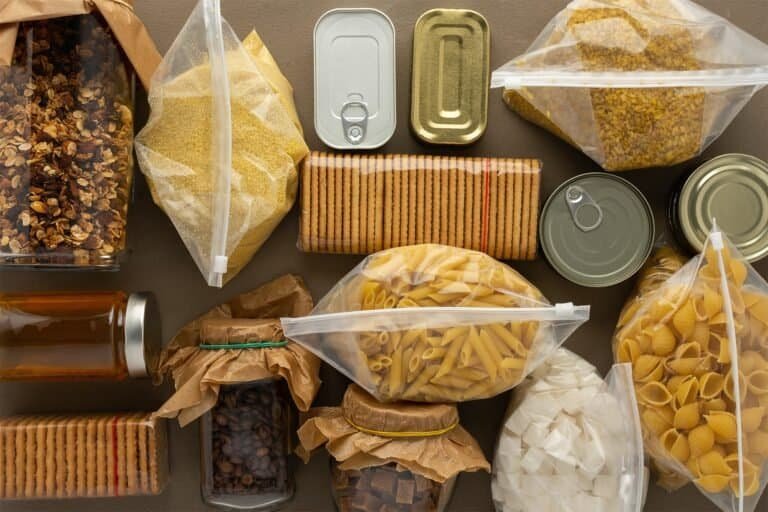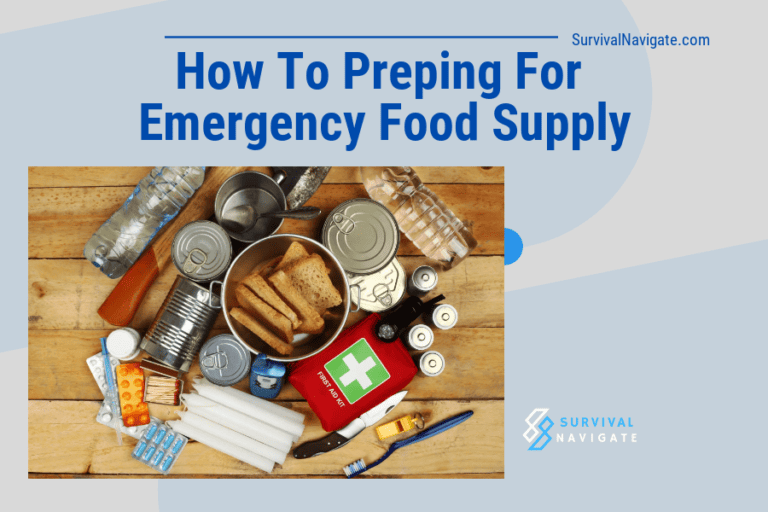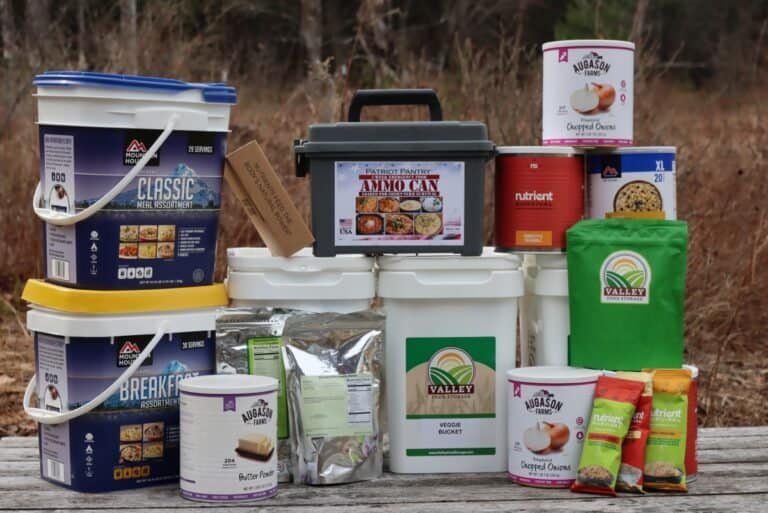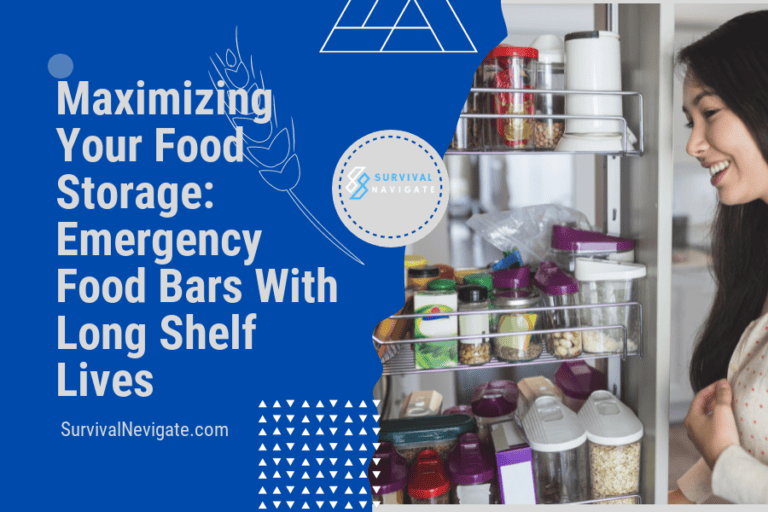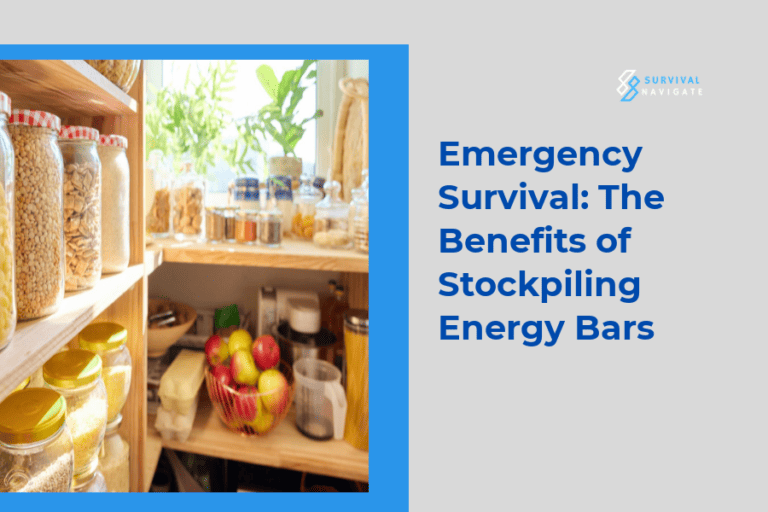Essential Tips for Building a Long-Term Food Storage Supply
Do you want to make sure your family always has enough food on hand? Are you worried about natural disasters, economic uncertainty, or other emergency scenarios? Building a long-term food storage supply is the answer.
In this blog, we’ll provide you with essential tips to help you start creating and maintaining your own long-term food storage. We’ll explain why having long-term food storage is important, what to look for when purchasing food for long-term storage, and the best ways to store food for maximum shelf life.
With our advice and guidance, you’ll be well on your way to building a long-term food storage supply that will keep you and your family safe and fed for years to come.
Why Having Long-Term Food Storage is Important
Having long-term food storage is important for a number of reasons. This type of food supply will ensure that your family always has enough food, no matter what kind of emergency or disaster might arise.
Not only will you have enough food on hand to get through any emergency, but you’ll also be able to take advantage of sales and purchase larger quantities of food for long-term storage. Having a larger supply of food also makes it easier to plan meals and never run out of ingredients.
Lastly, having long-term food storage can help you save money in the long run. By stocking up on essential items during sales, you’ll be able to cut down on grocery bills in the future.
For those looking to build their own long-term food storage, it’s important to know what to look for when purchasing food for storage. Canned goods, dry goods, and freeze-dried products are all great options for long-term storage.
Be sure to look for products that are high in nutrition and store well, as these will be the most beneficial. Additionally, be sure to check the expiration dates on the food you purchase and make sure they are far enough away so that you have time to use and rotate your supply of food.
Lastly, be sure to research the best ways to store your food for maximum shelf life. Vacuum sealing, oxygen absorbers, and mylar bags are all great options for storing food long-term.
Having long-term food storage can be a huge relief. Not only will it provide you with a sense of security and peace of mind, but it will also save you money in the long run.
With the right knowledge and preparation, you can create an effective and efficient long-term food storage supply that will serve your family for years to come.
What to Look for When Purchasing Food for Long-Term Storage
When purchasing food for long-term storage, it’s important to make sure you’re making the right choices. There are a few key things to look for when selecting food for your long-term food storage.
First, look for food that has a long shelf life. Many dry goods, such as grains and beans, can last up to 25 years in storage when properly packaged and stored. Canned goods, such as fruits and vegetables, can last up to five years. Choose foods that are high in nutrients and calories, such as nuts and seeds, to make sure your family is getting the nutrients they need.
Secondly, select food that is easy to prepare and doesn’t take too long. Long-term food storage supplies are meant to be used in an emergency situation, so it should not take too long to prepare. It is also important to make sure that any food you choose is suitable for your family’s dietary needs.
Finally, store your food in a cool, dry place. The temperature and humidity should remain constant in order to preserve the food as long as possible. Consider investing in a food storage container that is airtight and can be sealed tightly. This will help keep bugs and rodents away and keep your food fresh.
By following these tips, you can ensure that your family has access to nutritious, long-lasting food in the event of an emergency. With a few simple steps, you can make sure your family is taken care of for years to come.
Best Ways to Store Food for Maximum Shelf Life
Having a long-term food storage supply is a great way to ensure your family always has enough food on hand in case of natural disasters, economic uncertainty, or other emergency scenarios. But, it can be difficult to know where to start when it comes to creating and maintaining your own long-term food storage. To help, here are some essential tips for getting started.
When purchasing food for long-term storage, it’s important to look for non-perishable, shelf-stable foods that have a long shelf life and are nutritionally balanced. Examples of non-perishable foods include canned goods, dried beans and legumes, grains, freeze-dried foods, and dehydrated foods. These food items have a much longer shelf life than fresh produce and can provide a reliable source of nutrition for when fresh produce is limited.
Once you’ve gathered your food items, the next step is to make sure they are stored properly for maximum shelf life. The ideal way to store food for long-term storage is to keep it in an airtight, waterproof container. This will help to protect the food from pests, moisture, and other environmental factors that could cause spoilage or contamination.
Additionally, it’s important to make sure food is stored in a cool, dry, and dark place in your home. This will help to preserve the quality and taste of the food, and ensure it lasts as long as possible.
By following these tips, you’ll be well on your way to creating and maintaining your own long-term food storage supply. With the right food items and thoughtful storage techniques, you can ensure your family always has enough food on hand for whatever life throws your way.
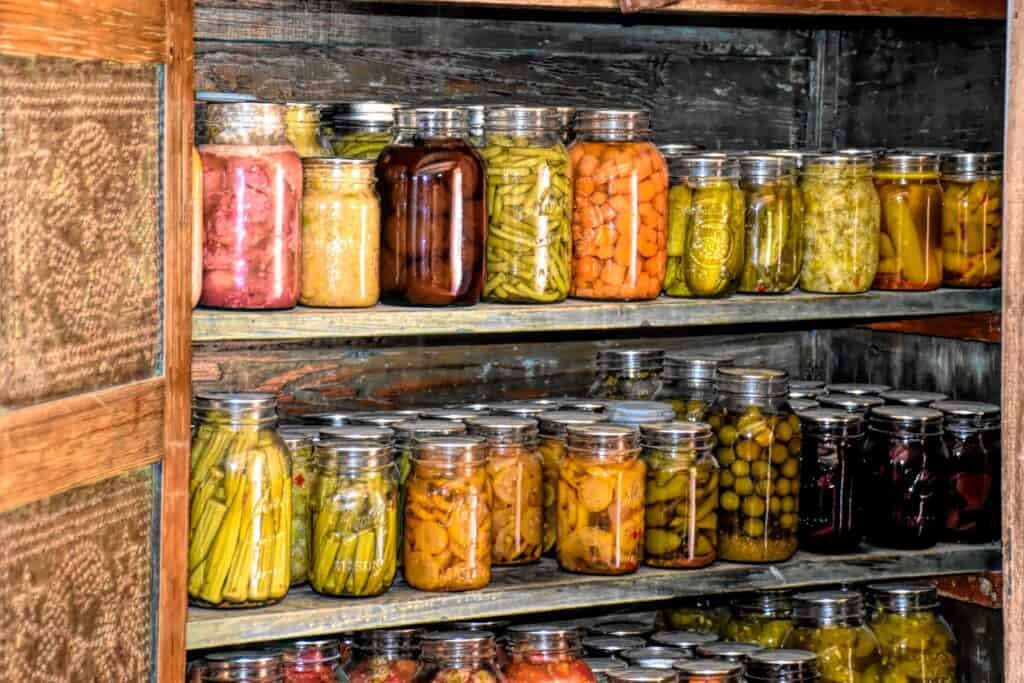
Considerations for Long-Term Food Storage
Having long-term food storage is a great way to ensure your family has enough food on hand in the event of an emergency or disaster. It can also provide peace of mind if you are worried about economic uncertainty or any other situation that could cause a disruption in your food supply.
When purchasing food for long-term storage, you should look for items that are non-perishable, have a long shelf life, and are high in nutritional value. Consider purchasing items such as dried beans and legumes, canned goods, freeze-dried fruits and vegetables, and grains such as rice and quinoa.
You should also ensure that you are storing your food properly to maximize its shelf life. This may include choosing the correct containers, avoiding humidity, and ensuring that your storage area is clean and free from pests. With these considerations in mind, you can be sure that you have a reliable food supply that will last you and your family for many years to come.
Tips for Making the Most of your Long-Term Food Storage
When it comes to long-term food storage, it’s essential to plan ahead and make sure you have enough to sustain your family. Here are some tips to help you make the most of your long-term food storage:
1. Invest in quality food storage items. It’s important to have quality food storage containers that are air and moisture-proof, such as plastic or glass jars, or vacuum-sealed bags. Make sure the containers you use are made of durable materials that won’t break or crack.
2. Rotate and inspect your long-term food storage supplies regularly. Check the expiration dates of your food storage items and replace any expired items. Additionally, inspect your containers and make sure they are still airtight.
3. Choose food items that are suitable for long-term storage. Look for food items that have a long shelf life, such as canned goods, dry beans, and grains. Additionally, consider purchasing freeze-dried and dehydrated foods, as they are usually good for several years.
By following these tips, you can ensure your long-term food storage supplies will last for years. With proper preparation and care, you can be sure that you and your family will have plenty of food to eat in times of crisis.
Stocking Up on Non-Perishable Food Items for Long-Term Storage
When it comes to stocking up on food for long-term storage, it’s important to choose items that are non-perishable. These are foods that are shelf-stable and can last for many months or even years without spoiling.
Examples of non-perishable food items include canned goods, dried beans and grains, dehydrated fruits and vegetables, powdered milk, and more. It’s a good idea to keep a variety of foods on hand to ensure that you have the necessary calories and nutrients for a healthy diet. It’s also wise to choose foods that you and your family will enjoy eating, since you’ll need to use these items in your everyday meals.
When stocking up on non-perishable items, make sure to keep an eye on the expiration date. Most canned goods and other shelf-stable foods will last for up to a year or two, so be sure to check the label before buying.
If you’re stocking up on bulk items, such as grains and beans, make sure that you store them in airtight containers to prevent spoilage. You should also rotate your supply every few months to ensure that the food does not go to waste by keeping the freshest items in the front of the pantry.


